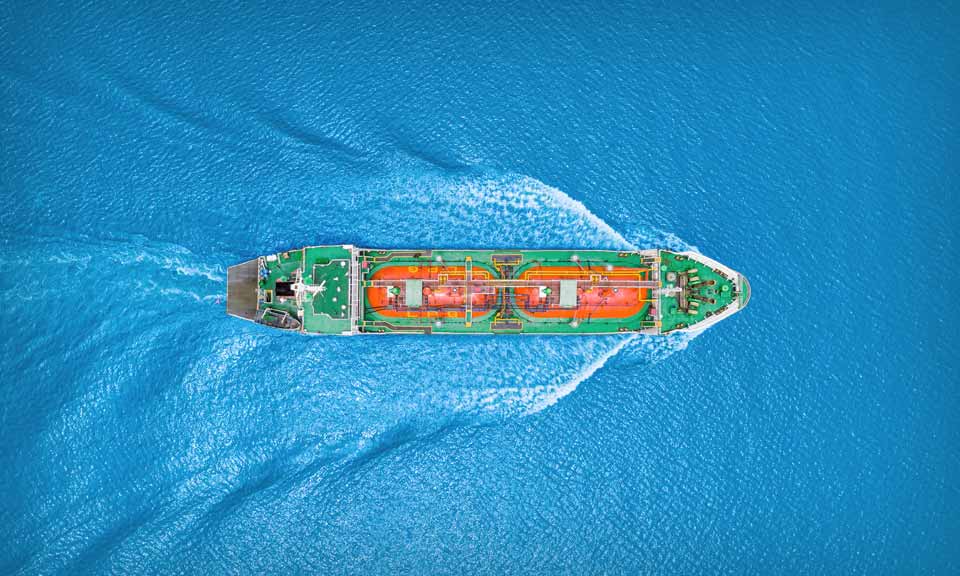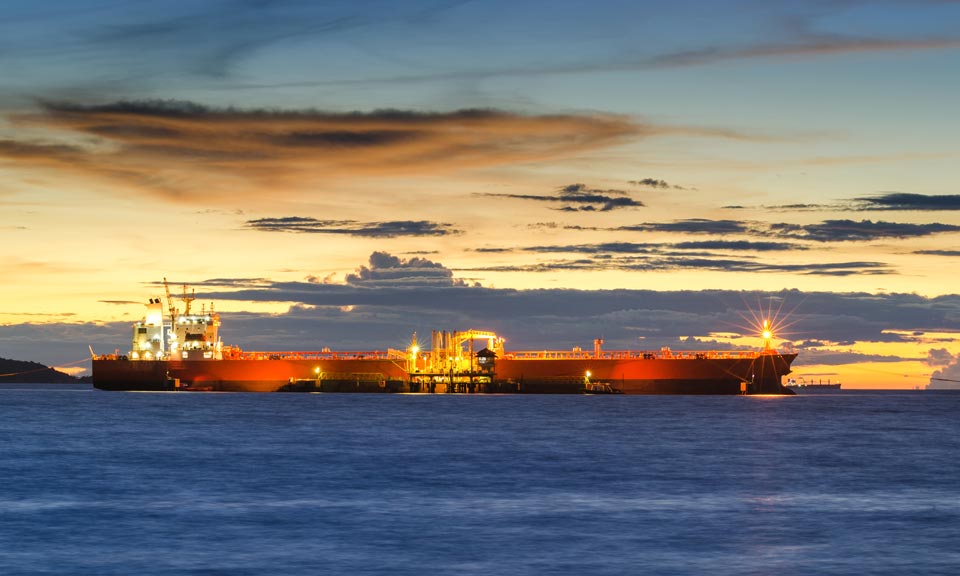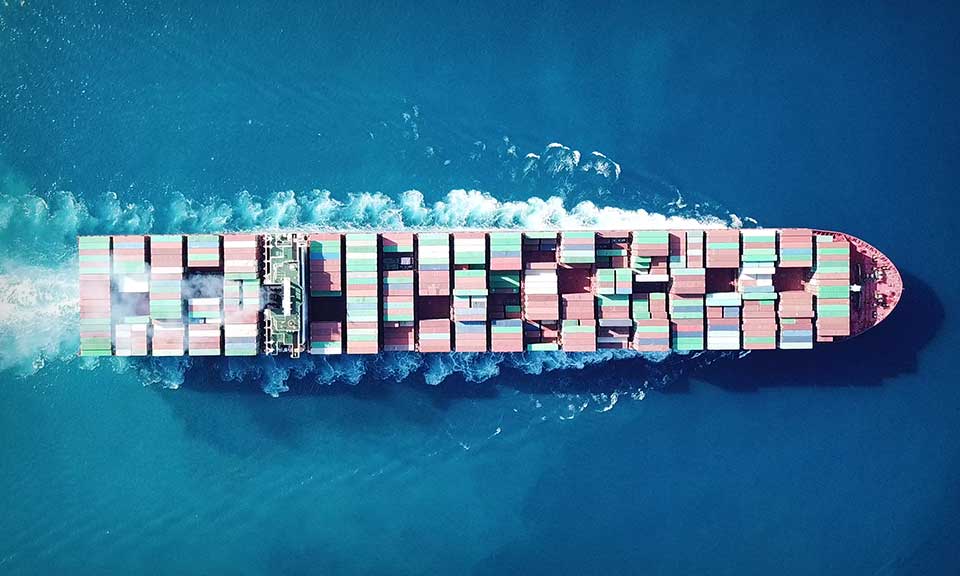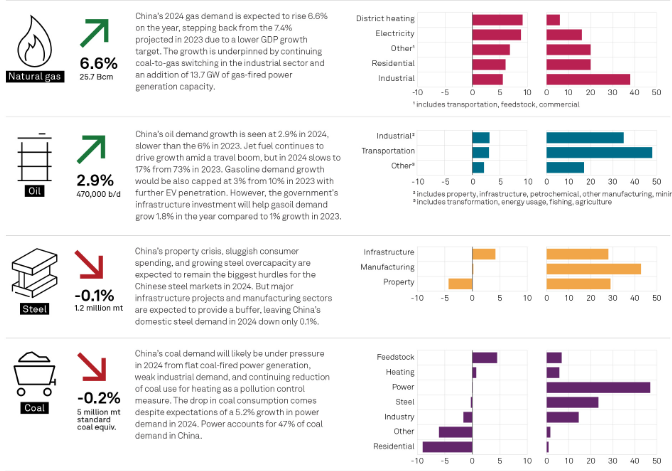TANKERS QUARTERLY: Freight may rise on longer voyages

Asia-Pacific tankers are likely to be firm in the third quarter of 2022, driven by changing trade flows leading to longer voyages amid the lingering Russia-Ukraine war and slow growth in the fleet.
While clean tanker freight hit an all-time high in June for some routes and a 26-month high for others, market participants and analysts expect that even dirty tankers will make gains in the current quarter.
This is likely to benefit owners who can use rising earnings to retire costlier debt while it may further push up the delivered cost of cargoes, making oil and its products expensive for end-users. However, the growth in earnings will be stymied by record-high bunker prices.
"Tanker freight is in early stages of a cyclical recovery, which is likely to continue in the third quarter, with strength gradually shifting from clean to dirty," said Oslo-based Ole-Rikard Hammer, senior analyst, oil and tankers, Arctic Securities.
London-based Maritime Strategies International, or MSI, has forecast daily average spot VLCC earnings during Q3 at $4,500, taking into account voyages to China from the US and the Persian Gulf, compared with a daily loss $6,200 in the first quarter. It has forecast that compared with Q1, LR2 earnings on the Persian Gulf-Japan route may more than quadruple to $24,700 in Q3.
Clean tankers will remain very strong due to a smaller orderbook for new ships, the imminent regulations on carbon emissions and the reorganization of the trade flows caused by sanctions on Russia, said Enrico Paglia, a Genoa-based research manager with Banchero Costa, or Bancosta.
Global oil demand is growing and inventories are very low, a classic setup for a trade upswing, Hammer said. This already became evident during the first half of 2022, with volumes approaching pre-pandemic levels, he added.
International Energy Agency, or IEA has forecast that the global oil demand will surpass pre-pandemic levels in 2023 at close to 102 million b/d. Shipping executives across the globe are latching on to such projections, while painting a bright picture for tankers' freight.
VLCCs have been reeling under pressure of a large fleet and brokers estimate the average daily losses so far this year in spot chartering on the Persian Gulf-North Asia routes at just over $5,000.
Late in June, before the freight rose above the key psychological mark of w50, daily losses for VLCCs on these routes were more than $15,000, the estimates showed.
Clean tankers have outperformed their dirty counterparts but now they too are expected to close the gap as refineries ramp up run rates, said Hammer. IEA estimates that expansion in global refining capacity will boost throughputs by 2.3 million b/d this year.
With the Russia-Ukraine war in its fifth month, there is now greater clarity on changing trading patterns, which has given a boost to longer voyages, or ton mile demand and tankers' freight.
Ton-mile demand is calculated by multiplying the volume of cargo moved in metric tons by distance traveled in miles. Covering a longer distance implies diminished availability of ships even if the total size of the fleet remains the same, or conversely, it offsets the increase in supply of tonnage.
In May, crude shipments from the Middle East to Asia dropped by about 8% month on month, MSI's Director, Tim Smith said in a monthly report. OPEC production also fell by about 200,000 b/d from the previous month, he said.
Earlier trade was lagging as OPEC+ cut output and companies cleared an overhang in inventories, said Hammer. Outlook has now improved. Western sanctions on Russia will push up freight for dirty tankers in the medium term, added Paglia.
Volumes are increasing, not least because demand for cheaper Russian crude is high, said Hammer. Moreover, distances are lengthening with Russian barrels shifting to Asia, while more oil is coming elsewhere as a substitute from the US Gulf and the Persian Gulf. According to IEA, Non-OPEC+ is set to lead world supply growth through next year, adding 1.9 million b/d this year and 1.8 million b/d in 2023.
From next year, the tankers' fleet growth is expected to slow considerably to around 1% due to historically low orderbooks, which are currently equivalent to around 6% of the trading fleet and a slight pick up in demolitions, said Bancosta's Paglia.
The tankers' orderbook is at least at a twenty-year low, added Arctic's Hammer. Low scrapping means there is still some fleet growth, but it is slowing and the level is manageable, he said.
According to Bancosta's estimates, during the first five months of the year, the global dirty tankers fleet grew by 1.5% with the VLCC fleet expanding by 1.8%.
During the same period the fleet size of clean tankers increased by 1.5%, but remains almost unchanged for relatively smaller sized ships due to a reduction of the number of handy tanker and LR1s amid scrappings.
In dirty tankers, Iran remains a dark horse and Paglia said a strong boost to freight could come if sanctions on the country are lifted, as that would increase demand and force a significant part of older tonnage to the scrapyards.

News
Russia, one of the world’s largest oil suppliers, has increasingly turned to non-Western firms to transport its crude to overseas buyers during its ongoing war with Ukraine . With a dual goal of undermining Russia’s war chest without creating significant disruptions to global supplies amid inflation pressure, G7 countries and their allies have banned tanker operators, insurers and other services firms from facilitating seaborne Russian crude exports unless the barrels are sold for no more than $60/b. The price cap regime, which came into force Dec. 5, 2022, does not directly cover tankers flagged, owned and operated by companies outside the G7, the EU, Australia, Switzerland and Norway, and not insured by Western protection and indemnity clubs. While such ships tend to be older and less maintained, their share in Russia’s crude exports market has been rising in recent months amid strengthening prices of Urals -- the OPEC+ member’s flagship crude grade -- and tightening sanctions enforcement by the West. Non-price-capped tankers have a larger market share in shipping Russia’s Pacific crude exports, according to analysis of S&P Global Commodities at Sea and Maritime Intelligence Risk Suite data. Crudes such as Sokol, Sakhalin Blend, and Eastern Siberia–Pacific Ocean grades are more often involved in these trades than Russian barrels from Baltic or Black Sea ports like Urals. Tanker operators in Greece, Europe’s top shipowning nation, managed to keep their traditionally strong market position in Russia in the first few months since the price cap took effect before giving ways to their peers in the UAE, Russia, China and Hong Kong. (Latest update: April 5, 2024)

News
Red Sea shipping volumes have slumped more than 60% since November as vessels opt for the longer Cape route to avoid Houthi attacks. But even as the severity of the attacks mounts, freight rates have retreated from recent highs and oil-on-water may have peaked as trade flows adjust. Click to see the full-size infographic

News
A series of attacks on shipping routes in the Red Sea has so far spared oil supplies from witnessing major disruptions, but oil importing countries are spending sleepless nights amid concerns that any escalation could potentially alter the situation drastically. Although the attacks disrupted container shipping lines, oil shipments remain largely stable. However, concerns stem from the fact that supply chains will likely have to adjust very quickly should the disruption persist. As existing oil tanker contracts are often hard to change, some ongoing traffic will continue to move through Red Sea passages. Any new insurance issued for Red Sea routes could add about $1/b or more to voyage costs, according to S&P Global Commodity Insights. Re-routing will increase voyage length, in-transit times and fuel costs. In addition, it will result in higher vessel utilizations, which could lift global freight rates as well as widen inter-regional crude spreads. Surely, more ships are avoiding the Red Sea and Bab al-Mandab strait after a spate of attacks by Yemen's Houthi militants, threatening the strategic chokepoint for global seaborne trade. Many shippers, tanker owners and some oil companies have suspended voyages through the area. Russia's oil exports are particularly exposed to further Red Sea disruptions as Moscow ships some 80% of its crude to Asian markets. The attacks are expected to keep insurance costs high and prompt many tankers to take the longer route via the Cape of Good Hope, increasing ton miles and voyage durations, as well as tightening supplies and driving up freight rates. Even for the route via the Suez Canal, higher fees effective this year combined with a carbon tax for Europe-bound cargoes, will increase overall costs for charterers. Special report: Taking the long way around: Ships divert from the Panama Canal Although the rerouting of tankers away from the Red Sea, a major conduit for oil loaded in Russia, will surely raise shipping costs, the impact will be transitory. Roughly 7 million-8 million b/d of crude oil and products transited the Red Sea in recent months, according to S&P Global data. The market, for sure, will adjust to the changing flows, but the re-routing will lead to more oil on the water for a longer period of time. Russian crude shipments, should they avoid the Red Sea, are most affected due to a much longer haul to Asia around Africa. And amid tighter fleet capacity, lingering geopolitical conflicts are expected to boost tanker freight in 2024 despite ongoing OPEC+ supply cuts and a possible slowdown in oil demand growth. Implications for Asia As the biggest oil importing region, Asia may not witness dramatic changes to near-term oil supplies amid the ongoing Red Sea crisis, but refiners are chalking out alternative plans to ensure steady feedstock flows in the event of an escalation, a move that could inflate insurance costs and crimp refining margins. Although the region relies on imported oil for the bulk of its needs, the strategic push among Asia's top importers to massively diversify their import baskets over the years, as well as expand strategic storage, will come in handy to ensure smooth and uninterrupted flow of feedstocks. The Red Sea crisis has three aspects to it, as far as Asian oil flows are concerned. First, any escalation will create hurdles for Russian crude flowing to Asia, forcing buyers to look for substitutes from other origins. Secondly, for products moving from Asia to Europe, exporters are cautiously watching developments before taking the plunge. And lastly, longer routes have the potential to create incremental bunker fuel demand in Asia. Oil flows into China have not been impacted much by the Red Sea turbulence, as fewer cargoes are headed there on that route. In addition, the impact on Russian oil flows to India has been minimal, with no major diversions seen so far. Russia contributed over 35% of India's total crude imports in 2023, amounting to 1.7 million b/d, according to S&P Global data. Asian oil buyers are not necessarily concerned about Middle Eastern sour crude supplies for 2024, as major sellers, including Saudi Aramco and Abu Dhabi National Oil Co., fully respect Asian customers' demand regardless of their production cut commitments. However, the economics for cracking Middle Eastern sour crude have been deteriorating as the costs of bringing Persian Gulf barrels to the Far East have been rising with shippers demanding risk premiums, while tanker insurance costs are also trending higher. Asian refiners may even look at cutting Middle Eastern term contractual volumes and explore other options like African, US and South American crudes to maximize margins. US crudes, for one, is becoming increasingly more attractive for Asian refiners as the price of lighter and sweeter WTI crude is nearly on par with high-sulfur Persian Gulf grades on a delivered basis. Supply cushion The attacks in the Red Sea continued even after the US-led alliance took military action to establish deterrence. The risk of a wider escalation also increased with Pakistan's retaliatory strikes against Iran for alleged Iranian militant attacks in Pakistan. Overall, the geopolitical tensions in the Middle East have only increased over the weeks. However, oil markets have largely shrugged aside the risk due to a lack of physical disruption to oil shipments and weak macro fundamentals. But increased risk in the Middle East is probably putting a floor to oil prices amid weak demand. S&P Global expects fundamentals to improve in the second half of 2024 and prices to move up. Still, OPEC+ market management and the alignment between Saudi Arabia and Russia on OPEC+ policy will be critical for oil markets in 2024. S&P Global forecasts Platts Dated Brent to average $83/b in 2024 and $76/b in 2025. A sharper economic slowdown or disagreement within OPEC+ on production restrain remains the biggest risk for oil markets going into 2024. By: Sambit Mohanty, Editorial Lead, Asia Energy News, S&P Global Commodity Insights, S & P Global Commodity Insights Further reading: Red Sea shipping risk

News
China on Jan. 17 released its 2023 GDP growth at 5.2%, meeting its target set in March last year. S&P Global projects China’s 2024 GDP growth to slow to 4.7% after the country's annual economic conference held in December implied that any fiscal and monetary measures taken in 2024 were unlikely to be more aggressive than in 2023. This sets a weak tone for commodity markets in terms of end-user demand. Click here to see the full size version